How To Clean A Smelly Shower Drain
You may think only plumbers know how to clean a smelly shower drain. However, it is far from the truth. Shower drain scents are frequent, but fortunately, they are pretty simple to cure if treated promptly.
Let’s be honest! There is nothing more unsettling than encountering the scent of a stinky drain when getting ready to take a soothing bath or shower. Things get even worse when you discover that the water is not draining after you have toweled off.
If you find yourself holding your nose when bathing, this article is for you. Whether you have excessive soap scum, long hair, or mold blocking your pipes and generating an odorous shower drain, the following strategies will help you deal with them effortlessly.
Get yourself a paper and a pen to take note of my method of eradicating unpleasant odors from your shower drain completely!
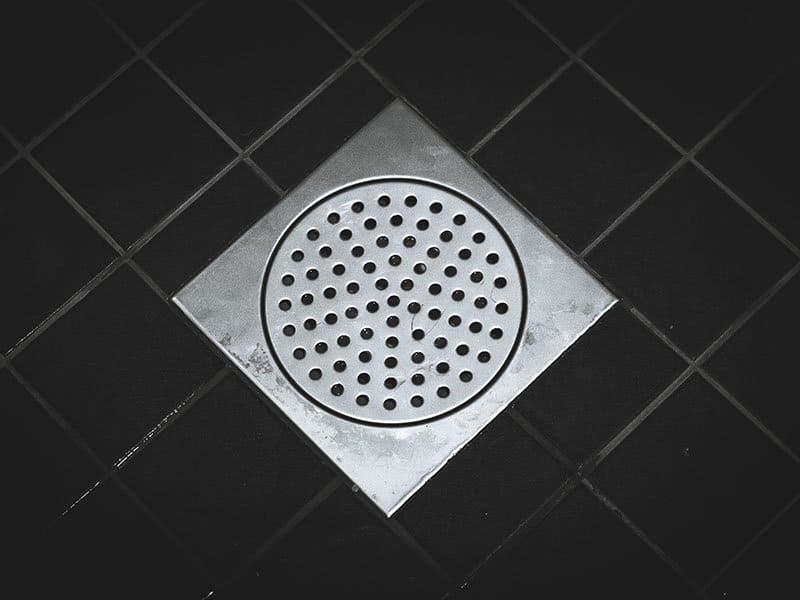
Why Does Your Shower Drain Get Bad Odors?
When solving problems, dig at the roots instead of just hacking at the leaves (Anthony D’Angelo). Identifying the source of foul odors is beneficial in selecting and implementing the proper treatment.
Unfortunately, various factors can introduce bad smells to your shower drain, making the root-digging journey harder! Yet, the good news is that you can narrow down all those factors into four main categories, each of which are easily diagnosed and resolved.
These four categories include:
- Drain clogs.
- Dry Or Leaked P-Traps.
- Biofilm buildup.
- Leaky pipes.
Reason 1: Drain Clogs
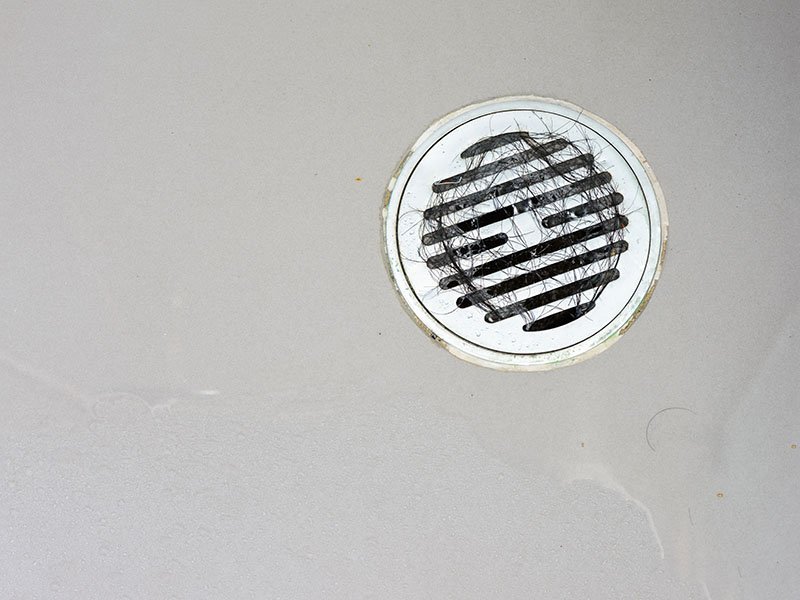
If you notice that water remains on the shower floor longer than usual, there is likely a blockage in your shower drain. This blockage containing hair, skin, debris, mineral deposits, soap scum, or mildew is the culprit of your unpleasant odors emanating from the shower drain.
These drain clogs are a typical occurrence due to the gradual buildup of all the contaminants mentioned above. Over time, these accumulations lead to obstructions, creating solid jams in your shower drain and emitting offensive odors.
Leaving these drain clogs unattended for a long time may develop into worse issues. If you feel you may have a clog, it is prudent to attempt clearing it and determining if the action resolves your odor issue.
Reason 2: Dry Or Leaked P-Traps
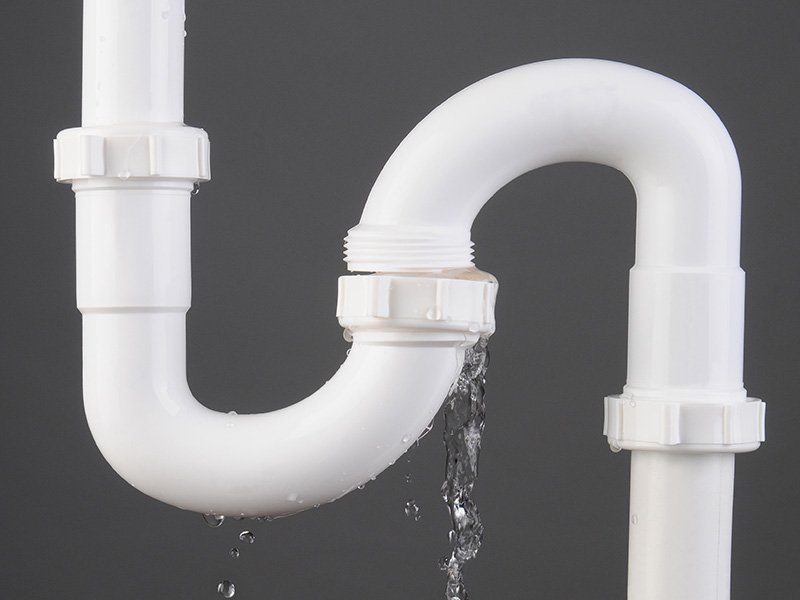
Do you detect an odoriferous sewage gas smell from your shower drain? If the answer is yes, have a check on your P-trap, as it may be dry. To verify, use a flashlight to shine down the drain. If you detect water, then it is good news.
Extending below your shower drain, P-trap is a U-shaped pipe through which water flows. Its function is to maintain a tiny amount of water in the pipe at all times to prevent sewage gases from coming back up the pipe and into your bathroom.
Problems arise when you haven’t had a shower in a while, causing all the water in your P-trap to evaporate.
However, if you have used the shower lately but still encounter symptoms of dry P-traps, it could be that your P-trap is leaked or damaged. If it is the case, you should hire a plumbing specialist to have a thorough examination.
Reason 3: Biofilm Buildup
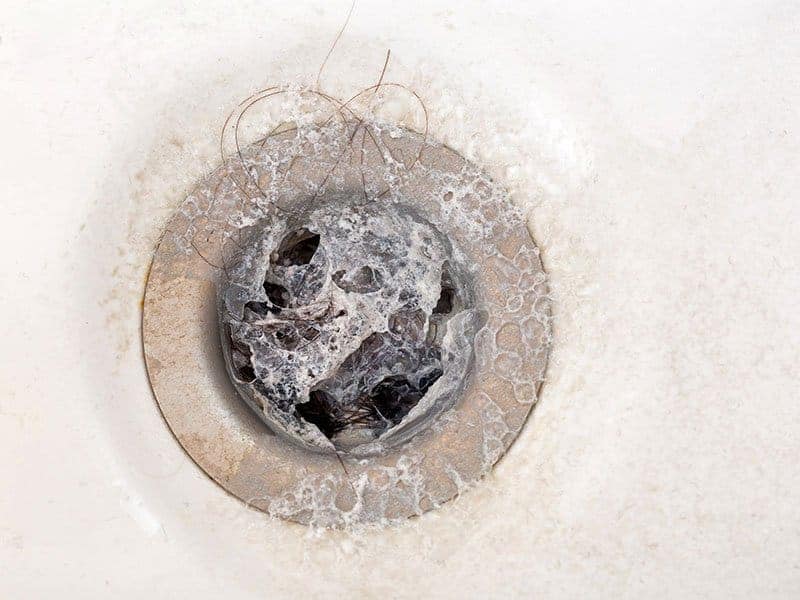
Biofilm is another common source of shower drain’s smelly scents. If you lean in for a quick smell and pick up musty, unpleasant stenches of mildew or rotten eggs, mold or biofilm may be forming and accumulating inside your shower drain.
A biofilm is a thin, slimy coating of bacteria that forms when water, shampoo, soap, and body oils flow down the shower drain and accumulate within the pipes. Not only does it sound revolting, but it may also be toxic for health.
Biofilm aids in the spread of Salmonella, E.coli, and MRSA, among other pathogens (1). Plus, the toxic bacteria in biofilm, such as S. marcescens, have potentially infected open wounds and cause urinary tract infections in those with weakened immune systems.
Reason 4: Leaky Pipes
The first three causes of shower scents are the common culprits that most homeowners can self-diagnose and deal with. Regrettably, in some situations, these stubborn smells are the result of more significant problems that need expert assistance. Leaky pipes are one of them!
Leaky pipes in the bathroom walls or under the shower drains enable sewer gases, sometimes called hydrogen sulfide, to escape. That is the reason why your shower drain may smell like rotten eggs or sewage in this circumstance.
Perforations in pipes or loose fittings between lines of piping cause leaks. If leaks from perforations often happen in metal pipes due to corrosion, loose fittings are the result of improper installation occurring with PVC pipes.
Clogs are another factor contributing to leaky pipes, particularly when they contain abrasive cleaning products or other corrosive compounds, allowing them to sit and eat away at your pipe.
Dealing With Drain Clogs
After discovering the four culprits that bring about a smelly shower drain, it is high time to develop appropriate strategies for each category. My solution part begins with methods on dealing with drain clogs, which is also the first major factor causing the offensive drain smells.
Solution 1: Use A Plunger
The first and easiest way to clear drain clogs is to rely on a plunger. It is not only chemical-free but also extremely simple to pull off. However, the method will become ineffective when the clog is deep and filled with hair.
What Is A Plunger?
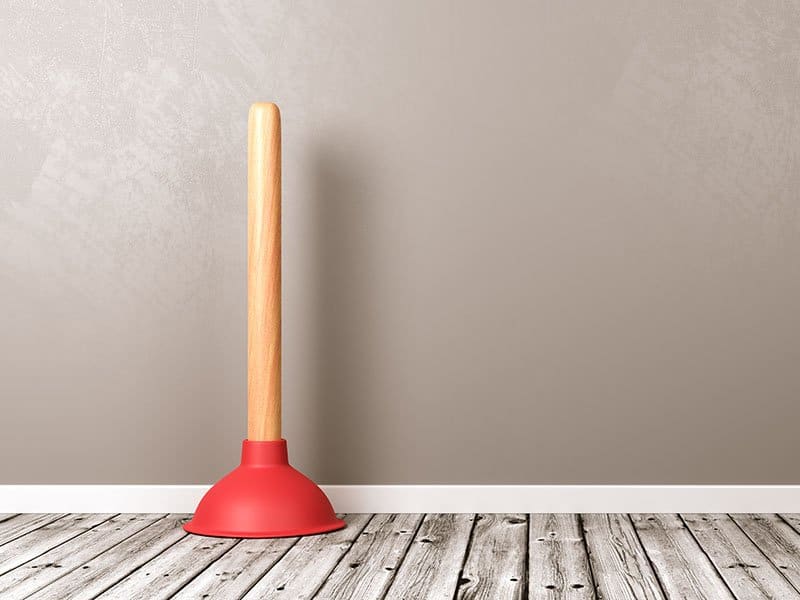
If you often deal with bathroom cleaning, you will be familiar with this plunger device. There are three main types of plungers:
- Standard cup plunger: is the most common type, comprising a rubber cup attached to a straight wooden handle. It works best on even surfaces like bathroom sinks, kitchen sinks, and tubs.
- Toilet/flange plunger: is the most flexible type, as the gadget works on every drain. Besides the similar rubber cup, it also has a flange (soft rubber flap) that folds out from the cup’s inside. This tool is best for folding surfaces, such as toilets and sinks.
- Accordion plunger: is the most difficult type to use. Made of hard plastic, this tool produces a lot of force. Yet, unlike the other two rubber types, this plastic plunger can damage your toilet surfaces.
How To Handle A Plunger Correctly?
Step 1: Choose the suitable plunger type for your shower drain. Since most drains lie on a flat surface, you can safely go with a common cup plunger.
Step 2: Remove the drain cover.
Step 3: Cover the plunger’s rubber cup over the drain hole. Apply some petroleum jelly over the cup’s edge if you have difficulties obtaining a good seal.
Step 4: Fill water to submerge the end of your plunger.
Step 5: Rapidly raise and lower the plunger handle to dislodge the obstruction.
Solution 2: Utilize A Drain Snake
Among various methods for unclogging a shower drain, using a drain snake is often my top-of-mind solution. This approach features a gadget called a drain snake that you can easily purchase at local hardware shops.
What Is A Drain Snake?
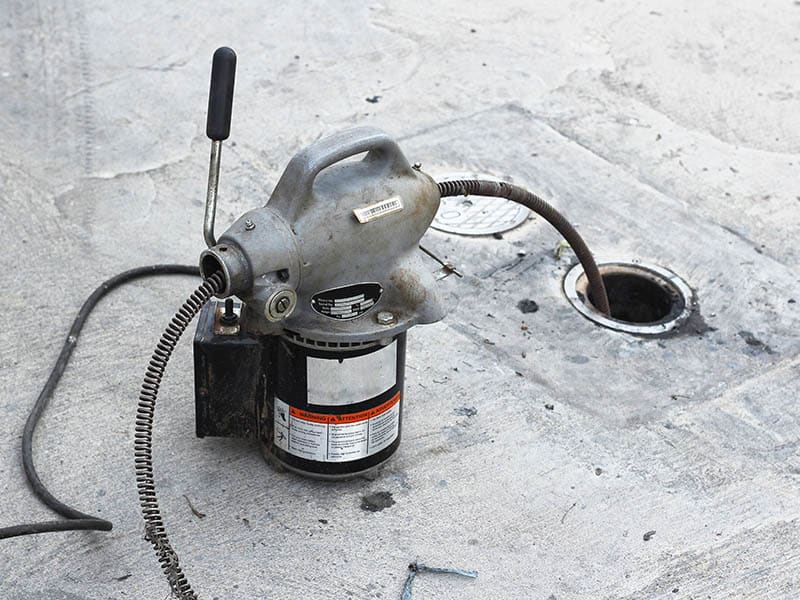
Also known as a drain auger or a plumber’s snake, drain snake is a tool used to reach into pipes and clear them of obstructions. The gadget acts as a middle ground between home plungers and really big rooters.
I highly recommend using items with a 1/4 or 5/16-inch cable to ensure that it can flexibly bend around your pipes. You can create your own drain snake by straightening a wire coat hanger and leaving a hook on the end to grasp whatever debris is clogging your drain.
Drain snakes are certainly more powerful than plungers. Yet, you have to be careful as inappropriate operations of drain snakes may result in rupturing your pipes and causing leaks.
How To Unclog Your Shower Drain With A Drain Snake?
Step 1: Insert the snake’s end into the drain hole and crank the handle on the drum.
Step 2: Continue sliding the snake down the pipe until you encounter the blockage.
Step 3: Rotate the gadget against the obstruction until you feel it enter the pipe easily.
Step 4: Verify the clog is completely removed by running water over your drain.
Unclogging a shower drain is never easier.
Solution 3: Pour Hot Water Down The Shower Drain
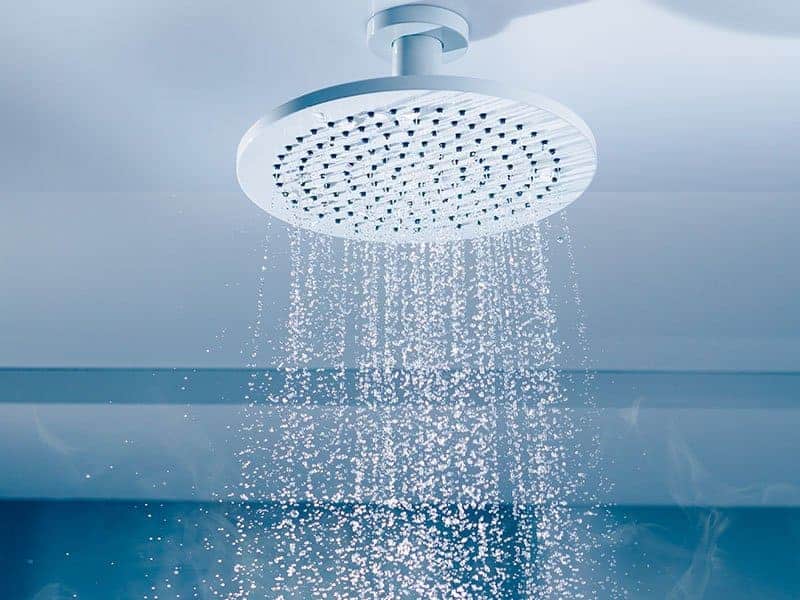
If you are certain that the pipes underneath your shower drain are not PVC, you can simply run boiling water through them for a few minutes. Otherwise, you will ruin your PVC pipes as the temperature limit for PVC is only 140 degrees Fahrenheit (2).
This effortless method can eliminate the odor and drain clogs below, especially when the clog contains mainly soap and grease. Perform this technique on a weekly basis to keep your shower drain in the best condition!
Let boiling water surprise you with its deodorization effect.
Solution 4: Rely On Natural Cleaners
If hot water is not strong enough to deal with the stubborn smells, you can rely on bleach, a mixture of baking soda and white vinegar to deal with the task.
Pour 1/2 cup of bleach down the drain and leave it for roughly an hour.
Or, drop 1/4 cup of baking soda and follow that with 1 cup of white vinegar for a few moments. You may hear a fizzing sound when baking soda reacts with white vinegar.
Complete the procedure by running hot water over the pipes for a few more minutes. Similar to the third solution, make sure you are not dealing with a PVC pipe. Otherwise, boiling water can severely damage your pipe.
Baking soda and white vinegar make the perfect pair to clean your smelly shower drain.
Solution 5: Unclog By Hands
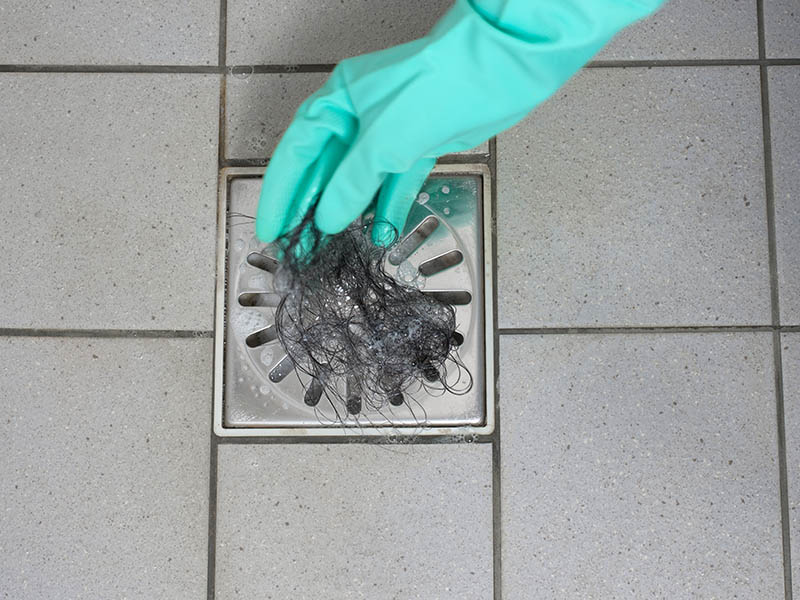
This solution works well for clogs produced by small objects or hair, but it is less efficient for obstructions caused by mineral buildup. Since this approach utilizes your hands, it is better off to wear rubber gloves. Follow these steps to execute this solution:
Step 1: Remove your drain cover. It usually involves the removal of a screw in the middle of the cover.
Step 2: Locate the clog by looking inside the drain. If necessary, use a flashlight.
Step 3: Pull the clog out with your fingers if it is within reach.
Solution 6: Use A Hook
If you cannot reach the clog with your fingers, using a hook is a great improvisation. Gather a piece of wire and turn it into a hook to fish the clog out.
Learn how to unclog your shower drain with a hook via this tutorial.
Solution 7: Rely On Chemicals
There are a plethora of commercial chemicals you can rely on to unclog your drain. However, keep in mind the following principles for your safety:
- Always follow the instructions on the package.
- Avoid using too much quantity.
- Wear gloves and goggles to protect yourself.
- Never attempt to mix chemicals as it can result in the release of hazardous gas.
Solution 8: Hydro-Jetting
If plunger and drain snake prove futile in removing drain clogs, you may have a blockage that needs expert clearance. Hydro-jetting is one extreme method recommended by specialists if the offensive odor lingers after you have tried other ways.
What Is Hydro-Jetting?
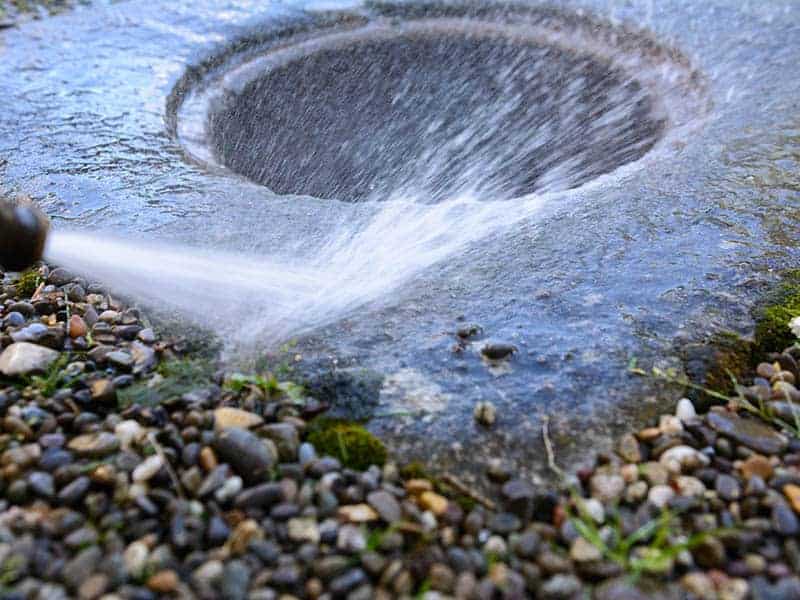
Generally speaking, hydro-jetting involves the direct passage of a pressured stream of water through your pipes underneath the shower drain to remove any accumulation or obstruction.
How To Conduct Hydro-Jetting?
Step 1: Choose the optimal location to insert the hose and begin pumping high-pressure water in.
Step 2: Adjust the correct pressure for the water stream. Normally, 5,000 psi or 20 gallons of water per minute is ideal for removing all greases and mineral buildups from any pipe.
Since this process is extreme, only let a professional plumber carry it out! Never attempt to perform the task on your own! The technology can generate cracks and holes in your old pipes.
Fixing Your P-Traps
Fixing problems associated with your P-trap is incredibly easy. You mainly encounter two kinds of issues here: a dry P-trap and a dirty P-trap. Each problem comes with a different set of remedies.
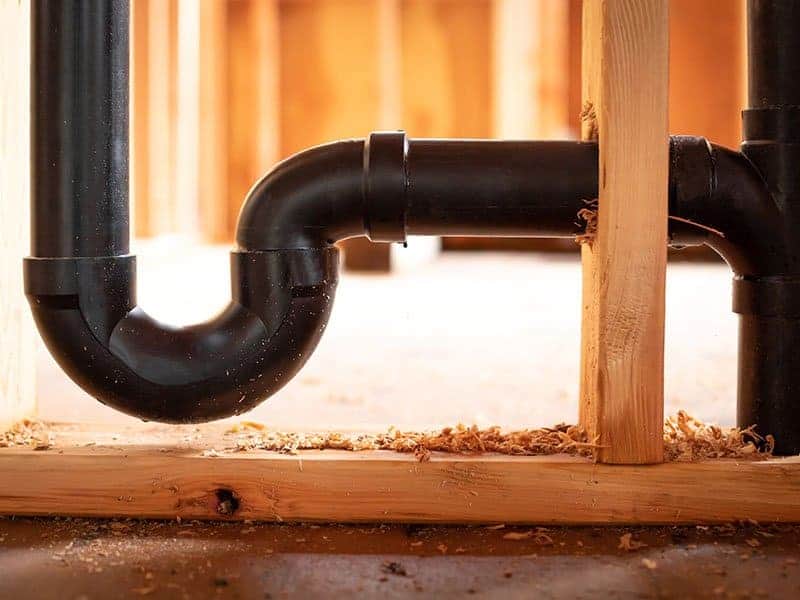
Dry P-Traps
You should feel glad if dry P-traps are what you are dealing with since the solutions for this issue are fairly simple. This incident happens when you only use the shower on an irregular basis, causing the water level in your P-traps to evaporate.
Water
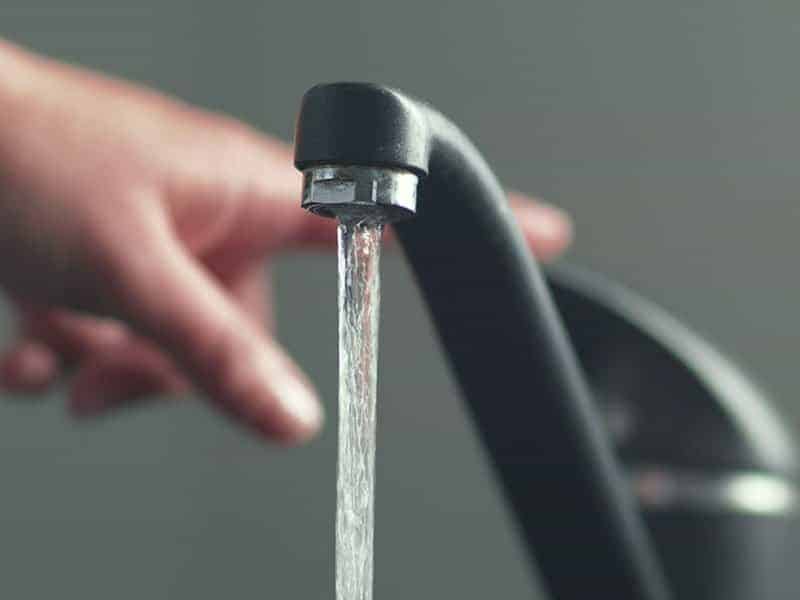
For this approach, all you need to do is run half a gallon of water over the shower drain for a few minutes to refill the U-shaped pipe. Once you do it correctly, the offensive odor will rapidly vanish.
Cooking Oil
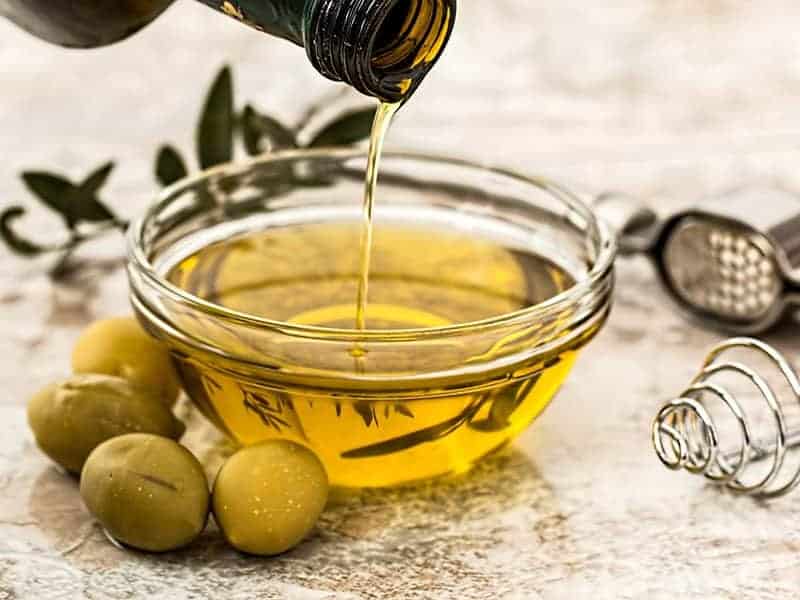
You can even throw four ounces of oil down your shower drain. Seriously, any cooking oil will do the job fantastically, even better than water itself, as the substance evaporates more slowly. Thus, it will keep stinky smells from your shower drain much longer.
White Vinegar
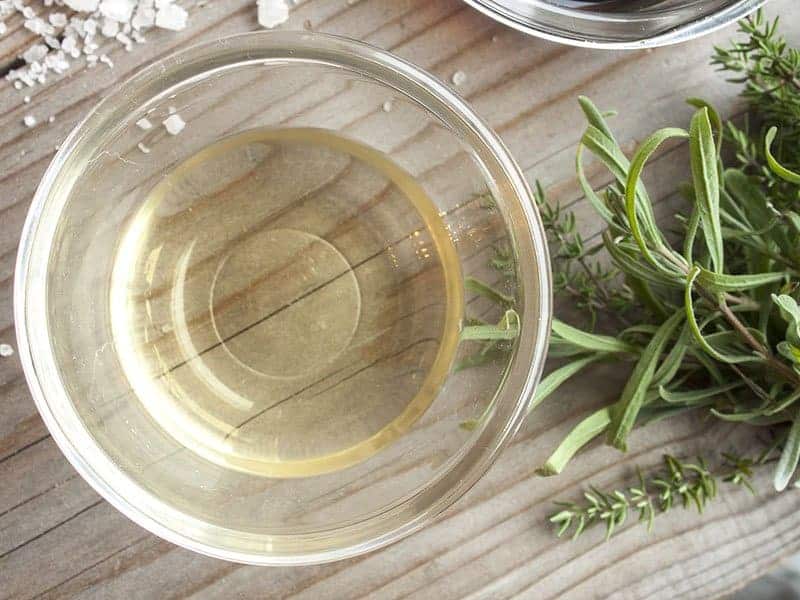
Instead of water and cooking oil, using white vinegar to eradicate larvae from shower drains is also effective. A single white vinegar cup will do the job and slow down the evaporation process.
Bleach
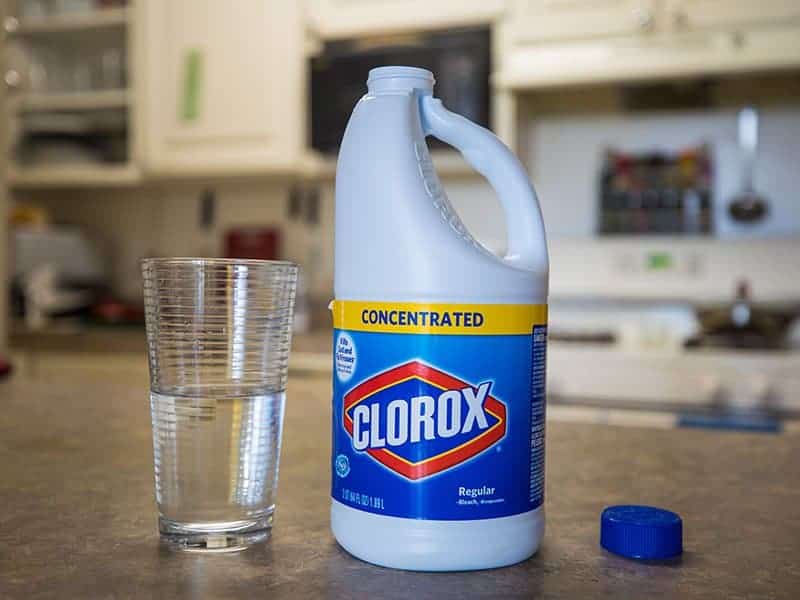
Bleach is a more powerful version of white vinegar to combat larvae from your drains. Since it is a strong chemical, always wear gloves and safety goggles when handling it. Never add more than 1 cup to the P-traps.
Specialized Products
If you need a “set it and forget it” tool, try my recommendation of Febreze Small Spaces Air Freshener. It is useful in keeping the air fresh even when you rarely use the bathroom. This tool is ideal for putting in your guest bathroom.
Dirty P-Traps
Unfortunately, what you are encountering is not a dry P-trap. Instead, your U-shaped pipe is unclean and causes a huge odor problem. Even if you clean your bathroom meticulously, you may have accidentally overlooked this subtle area.
In this case, let’s gather the following materials to deodorize your smelly shower drain:
- 1/2 cup of baking soda.
- 1/2 cup of white distilled vinegar.
Then, apply this simple technique:
Step 1: Begin by pouring baking soda and then white vinegar down the drain.
Step 2: Cover the drain with a stopper or a plate to allow better conditions for the chemical reaction.
Step 3: (Optional) After the chemical reaction, clean the inside of your drain, including the P-trap, to remove any remaining filth (earth, mud, debris) accumulated within your P-trap and cause bad smells.
You may use bleach or other cleansers. However, keep in mind that strong chemicals can harm your U-shaped pipe if used excessively or regularly. So, home cures should come first.
Removing Biofilm From A Shower Drain
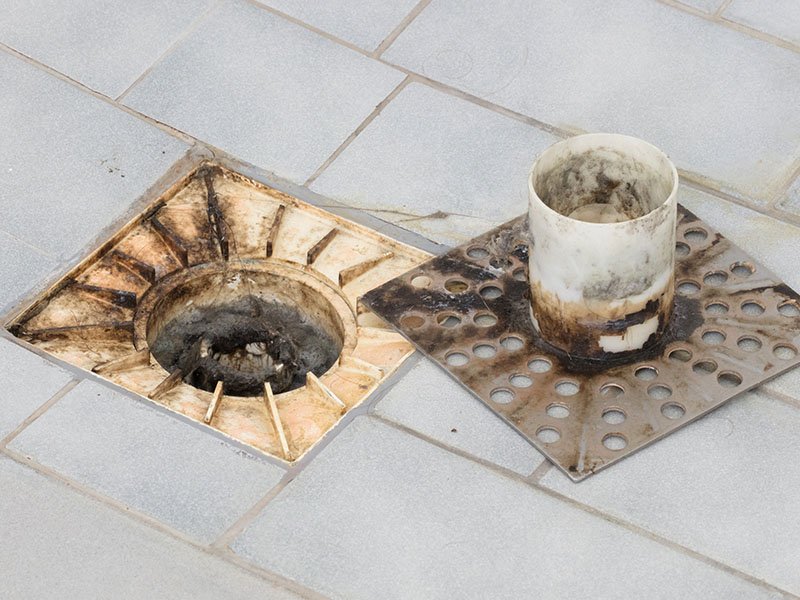
Avoiding biofilm accumulation is a critical practice to keep your shower drain safe from stinky smells. If you wonder how to remove these musty layers from your drain, here is how you do it!
Option 1: Utilize A Fuzzy Paint Roller
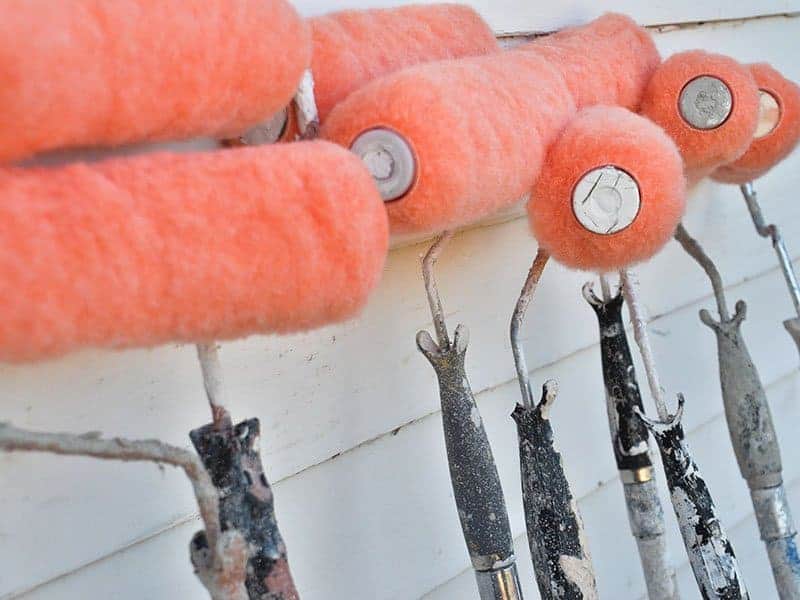
To remove biofilm from a shower drain, my first option for you is to rely on a fuzzy paint roller. The tool is exceptionally suitable for the task. However, the method requires a bit of elbow grease. Here is how you do it:
Step 1: To begin removing biofilm from your drain, remove and clean the drain cover.
Step 2: Dip a fuzzy paint roller cover in your preferred cleaning solution and vertically shove the tool down the drain. This paint roller cover has the ideal size and form for cleaning the interior walls of most shower drains.
Step 3: Repeat the cycle of pulling up the paint roller cover, washing it off, and putting it back down the drain until no visible biofilm remains on the tool.
Besides the shower drain, you should prevent biofilm from returning by cleaning your shower floor and walls near the drain. Use any brush and disinfectant product you have in your home to perform this practice on a weekly basis.
Option 2: Use Boiling Water, Baking Soda, And White Vinegar
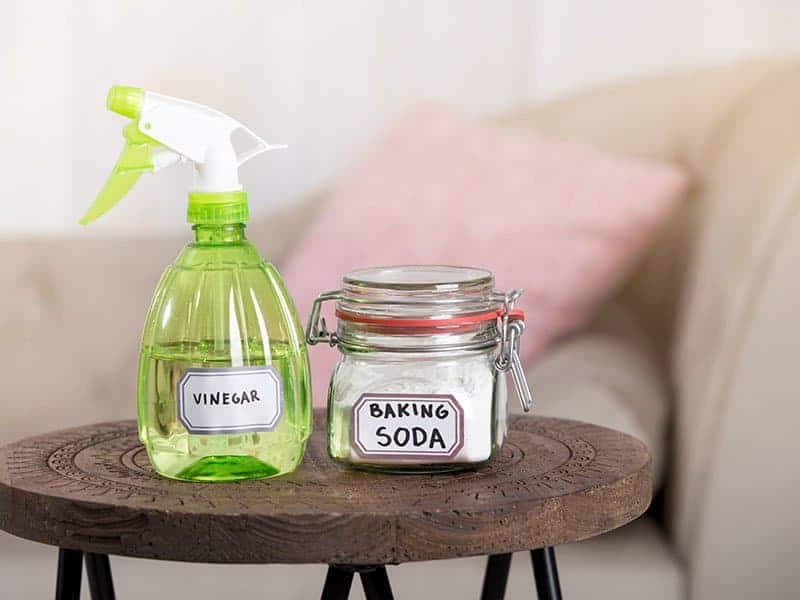
These items are all familiar cleaning substances that you can use for various projects.
Before attacking the stubborn biofilm, gather the following objects:
- Boiling water.
- Distilled white vinegar.
- Baking soda.
- A drain brush.
Then, use those tools to do the below tasks:
Step 1: Grab a screwdriver and open your drain cover.
Step 2: Boil 5-10 quarts of water. Then, allow it to cool down to around 66 degrees Celsius. Pour it down your drain carefully.
Step 3: Continue to pour one cup of white vinegar and then half a cup of baking soda down your shower drain.
Step 4: Be patient for two hours to allow the chemicals to perform their magic.
Step 5: After waiting, pour a gallon of hot water down your drain.
Step 6: Gather a drain brush and run it along your drain to ensure no sticky biofilm residue remains.
Repairing Your Leaky Pipes
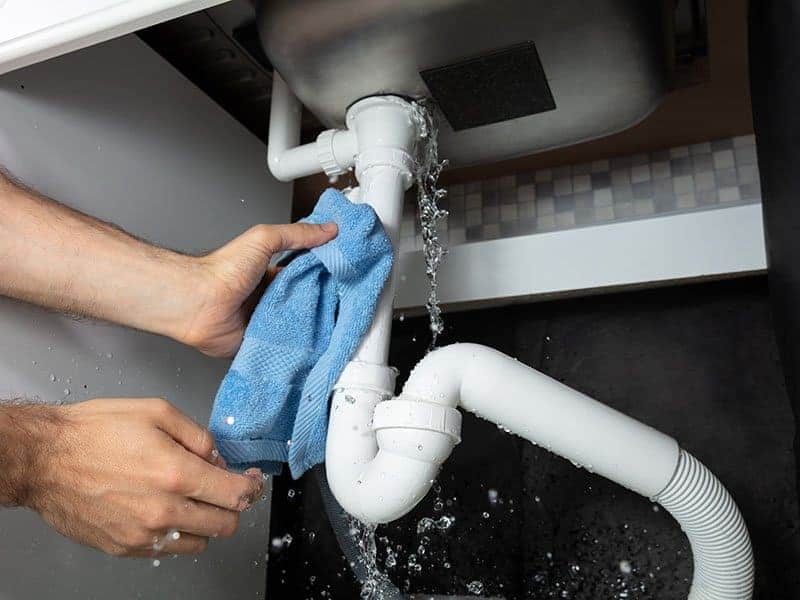
The answer to a leaky pipe is not as straightforward as all the options outlined so far in this post. It depends on the pipe material, the ease with which you can access it, and other factors. In certain situations, finding a leak is just the first indication of more serious plumbing problems.
So, my advice for you in this case is to leave it to the specialists. Contact a qualified plumber to come out and examine the situation. They should be able to rectify the problem completely and properly. Plus, it eliminates inadvertent, extra damages to your pipe from a newbie error.
Tackling Other Issues That Make Your Shower Drain Smelly
Besides the four main problems above, there are a handful of other minor issues that you can tackle easily to eradicate offensive smells from your shower drain. Let’s find out what they are.
Trapped Hair
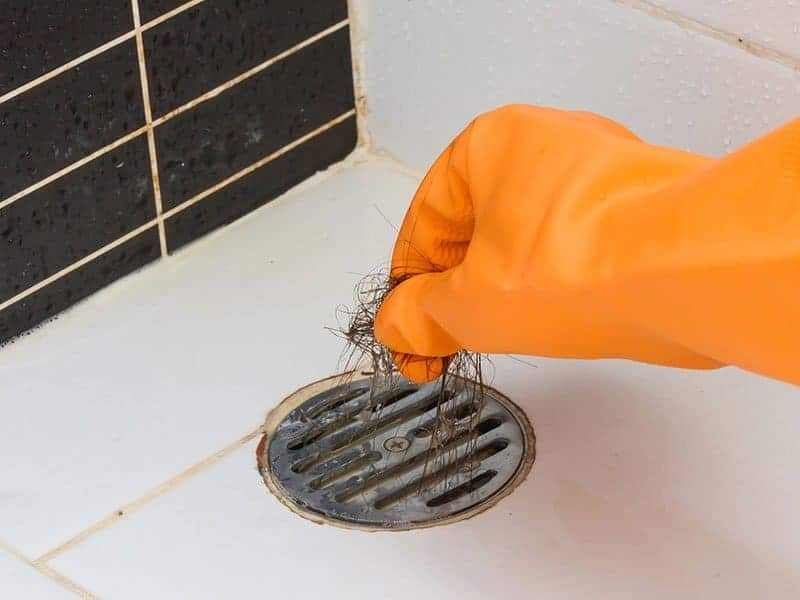
Trapped hair is a significant contributor to shower drain jams, giving birth to troubling odors. Yet, it is extremely easy to prevent.
One simple solution is to brush your hair out before shampooing. This practice will remove any tangled or extra hair that would fall and block the drain during the shower.
If your smelly drain is clogged with hair, try a product like Green Gobbler Main Drain Opener to dissolve it and other odor-causing factors.
If you have an open drain hole without a stopper, you should consider installing a shower drain hair catcher. The device will eliminate long-term hair blockage issues.
Dirty Shower Drain Cover
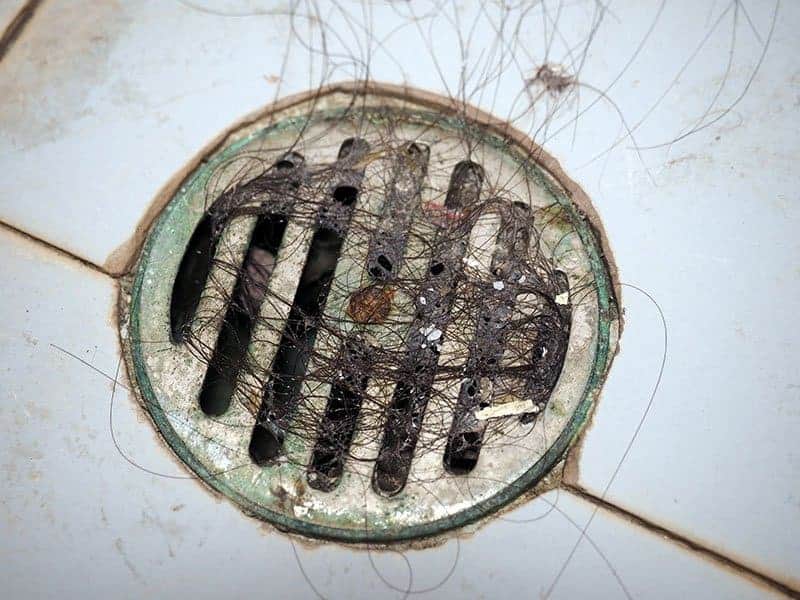
Sometimes, it is the dirty shower drain cover that causes messy odors. If it is the case, remove it from your shower drain and clean both sides thoroughly with your preferred cleaning solutions to remove all soap cum accumulated on it.
Also, use a brush to scrub it carefully. Drain cover requires regular maintenance as it serves as the first line of defense against dirt accumulation for your shower drain.
Opt For Liquid Hygiene Items
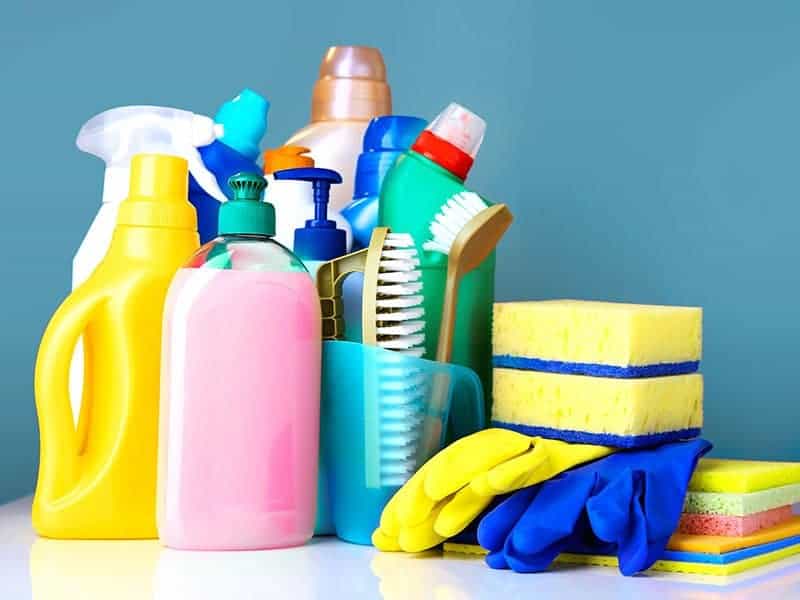
Don’t be surprised that certain hygiene items generate a lot more soap scum for your shower drain than others. Therefore, my advice is to rely on liquid soap (instead of a bar of soap). This subtle behavior change will reduce the chance that your drain becomes smelly.
FAQs
The post is not over yet. So, keep on reading as the following section contains all real case studies from various people. Answering their questions may provide practical knowledge that you can apply for your own good.
Call For Professionals If All Methods Fail
If all the above methods of how to clean a smelly shower drain fail, it is prudent to get the assistance of a second pair of eyes with greater expertise. At this point, the offensive odors you are smelling may indicate more serious damages to other parts of your house.
After reading my post, I hope you have gained some useful knowledge on dealing with bad smells from your shower drain. Feel free to share your fixing experiences below so that all of us can learn from your true story. Thank you for reading!
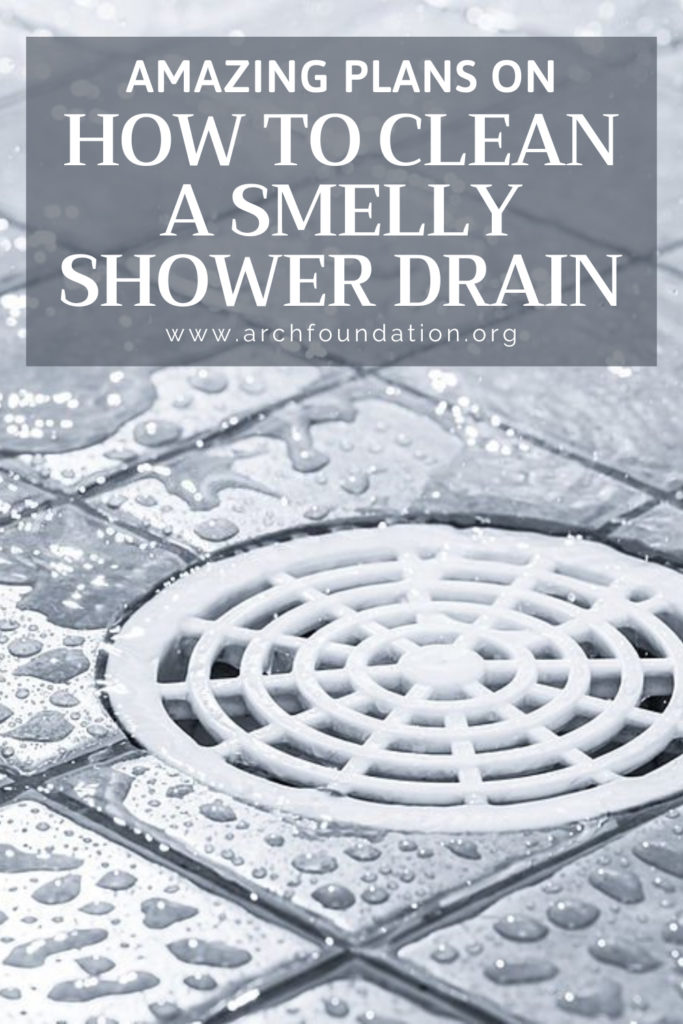
References
- NCBI. Antimicrobial and Antibiofilm Activities of Essential Oils against Escherichia coli O157:H7 and Methicillin-Resistant Staphylococcus aureus (MRSA).
- The Engineering Toolbox. Plastic Pipes and Maximum Operating Temperatures.
